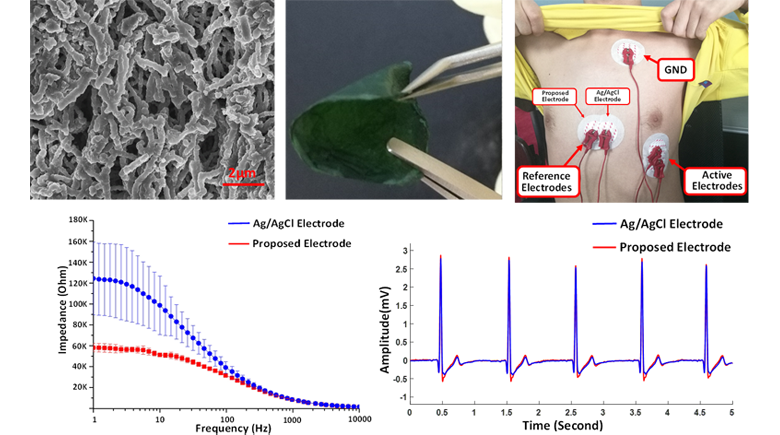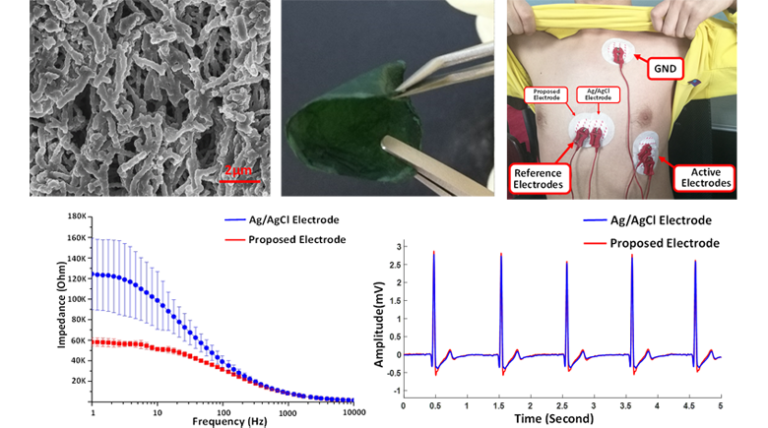Part of the NIH-IEEE POCT 2017 Special Issue
Abstract:

Objective: We propose a flexible, dry and antibacterial electrode with low and stable skin electrode contact impedance for bio-potential signal monitoring. Methods: We fabricated bacterial cellulose/polyaniline/AgNO3 nanocomposite membrane (BC/PANI/AgNO3) and used it for bio-potential signal monitoring. Bacterial cellulose (BC) provides three-dimensional nanoporous network structure, and it was used as substrate material in the BC/PANI/AgNO3 nanocomposite membrane. Polyaniline (PANI) and AgNO3, acting as conductive and antibacterial components, respectively, were polymerized and deposited on the surfaces of BC nanofibers to produce uniform thin film membrane with flexible, antibacterial, and conductive properties. Various measurements were conducted, in terms of antibacterial activity, skin electrode contact impedance, and qualitative analysis of ECG signal recordings. Results: The BC/PANI/AgNO3 membrane revealed 100% antibacterial activities against both Staphylococcus aureus and Escherichia coli bacteria. The skin electrode contact impedance of the proposed BC/PANI/AgNO3 electrode is lower than that of the Ag/AgCl gel electrode, with same active area. Additionally, the ECG signals acquired with the proposed electrodes have stable characteristic waveforms, and they are not contaminated by noise. Waveform fidelity of the BC/PANI/AgNO3 membrane electrodes over 800 ECG cardiac cycles is 99.49% and after the electrodes were worn for 24 hours, a fidelity of 98.40% was recorded over the same number of cardiac cycles. Conclusion: With low and stable skin electrode contact impedance, the proposed dry BC/PANI/AgNO3 membrane electrode provided high fidelity for ECG signal recordings and thus offering a potential approach for bio-potential signal monitoring. Significance: With the above benefits, the novel flexible and dry BC/PANI/AgNO3 electrode has significant antibacterial. Most of all, it is the first research to develop antibacterial in electrode design.

